#Nomads india
Text
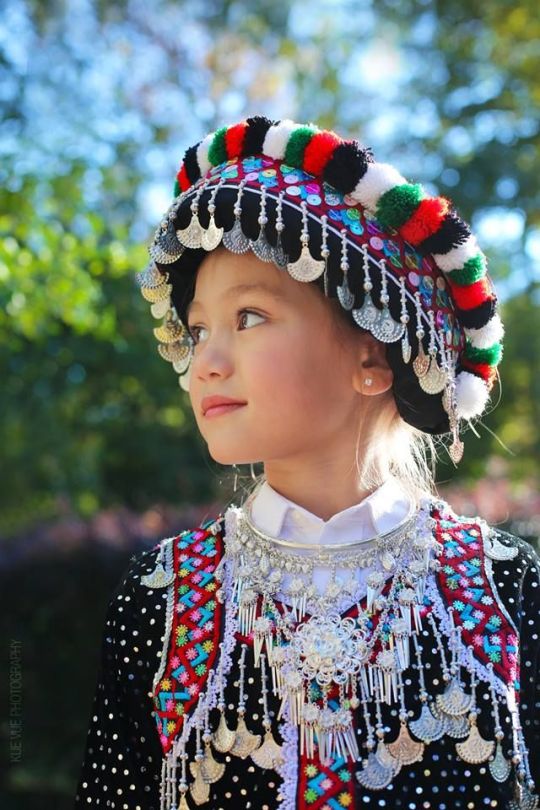

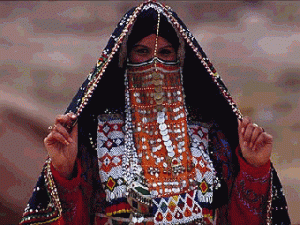
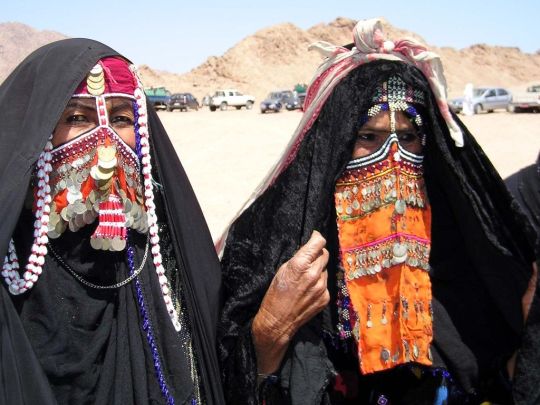

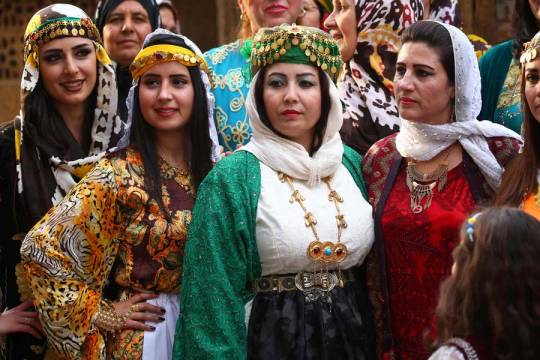

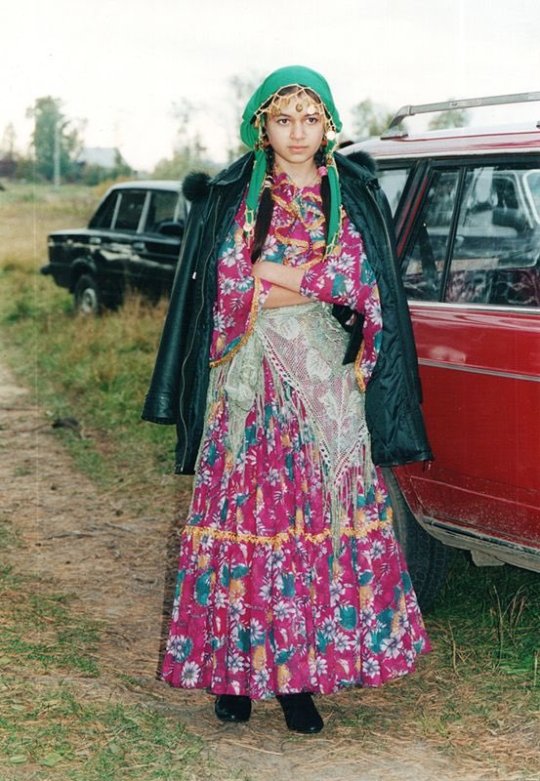
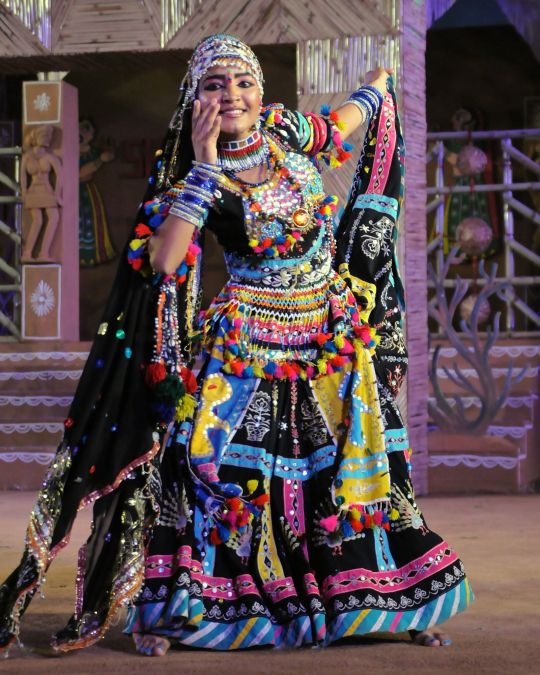

#coin fashion#coin jewelry#asia#middle east#eurasia#india#rajastani#bedouin#romani#kurd#kurdish#hmong#laos#dance#traditional clothing#vibrant#desert#nomad#Gypsy#jewelry
61 notes
·
View notes
Text
thats why it hurts my brain too when ppl have intense ass arguments abt what race specific "hard to classify" groups are
the balkans are just one example of this bc weve been considered a bunch of shit throughout history and we exist in a weird position always but. there are So Many ethnic groups and regions of the world which are like this
and ppl will go on entire things with the upmost seriousness trying to "race" whatever ethnicity when its like....... dude do you not understand.... does the entire argument itself not make you see.... this is all made up and this conversation makes no damn sense bc there isnt actually any sort of biological basis that this shit is based on ,, ,,, race is Largely some bullshit made up for the sake of oppression and youre trying So Hard to shove ppl into it instead of understanding the complexities of the situation...why..... pls stop
#are somalis black or arab? god i wish we could just stop w this also as if there aren't afro arabs as if historically#what we call arabs arent one of the fitst ppls out of africa as if there arent dark skinned arabs w curly hair#as if there isnt MORE diversity between africans than there is with non africans 😭😭 bro black or even african isnt any race theyre the#oldest ppl on earth the amount of genetic variation is insaaaneee#does the endless conversation itself not show this is a social issue not a real biological issue ppl are being shoved into and shoving#themselves into????#are balkan ppl white. are slavs white.#dude what the fuck is the white race. weve been considereded white recently were also not like????#are the kuchi people of aghanistan and india white? asian?#this entire convo is stupid race isnt a thing they are people they are a nomadic ethnic group w a history#STOP#are indigenous americans asians or indigenous??? well they come from asians but again this convo goes in circles bc neither asian or native#american as a Race is an actual thing that Exists#Race is some bullshit made up for oppression and which largely still exists today for oppression Or in the best case scenario to#classify broad groups of ppl together based on looks#but its not a Real Thing with Real Definine Lines and Real Biology which there are Real Answers To
4 notes
·
View notes
Photo
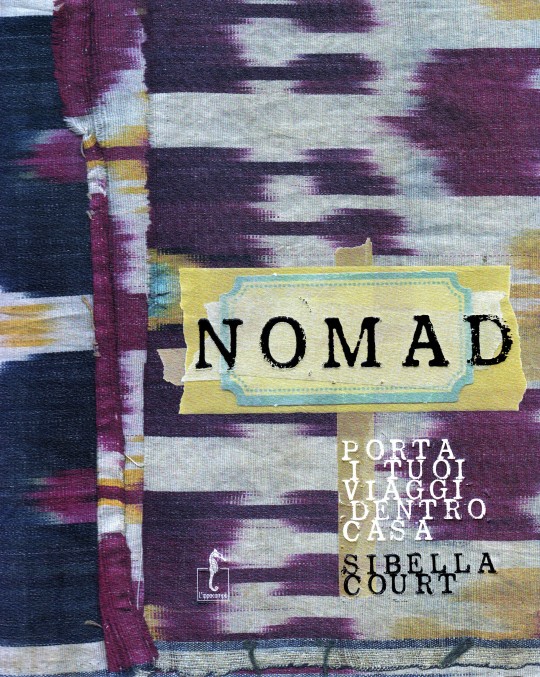


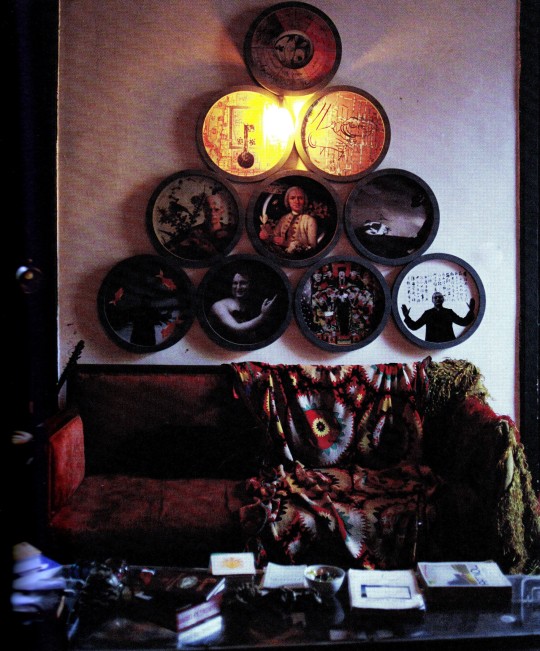

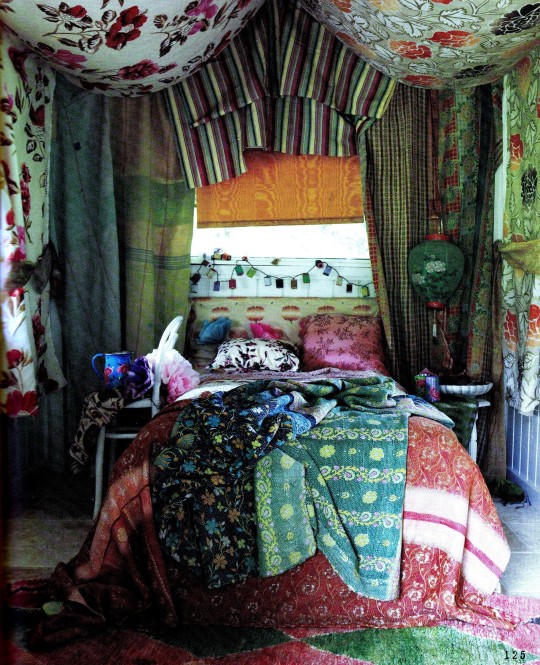

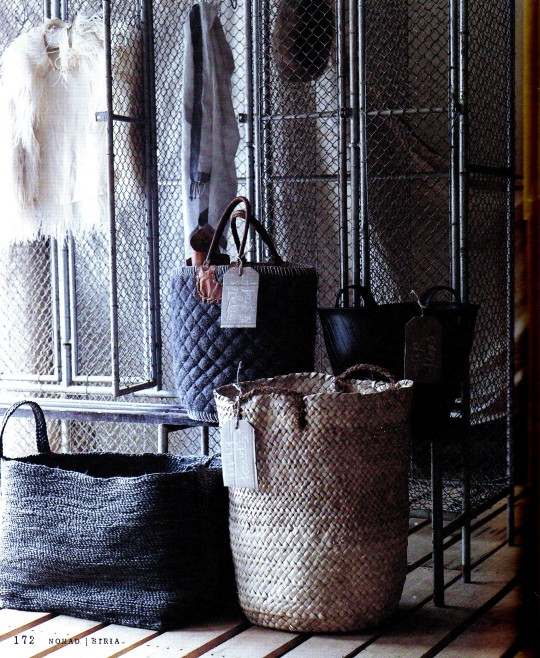
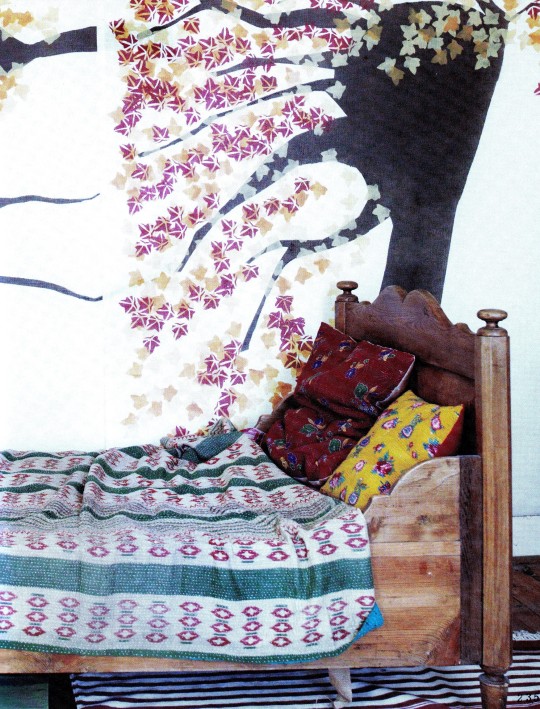

Nomad
Porta i tuoi viaggi dentro casa
Sibella Court
L’ippocampo, Milano 2012, 256 pagine, Rilegato, 22,8 x 27 cm, ISBN 978-8867220083
euro 60,00
email if you want to buy [email protected]
In "Nomad", Sibella Court, autrice di "Etcetera" e "Guida della stilista a NYC", ci spiega come portare i nostri viaggi fin dentro casa nei modi più sorprendenti. Celebre giramondo e cacciatrice di tesori, Sibella Court ha viaggiato in ogni parte del pianeta e ha tratto ispirazione da qualsiasi cosa, dai cartelli stradali fino alle scope di casa, inventando un nuovo stile di interior design. L'approccio di Sibella Court non è quello di rifare il look di una casa da cima a fondo, ma di aggiungere e togliere, di riadattare e riciclare, in modo da creare degli interni che siano il riflesso della propria personalità, delle proprie esperienze e del proprio stile di vita. "Nomad" si articola in cinque proposte, corrispondenti ad altrettanti viaggi: Giappone, Italia (costa amalfitana), Siria, India e Messico.
orders to: [email protected]
twitter: @fashionbooksmi
flickr: fashionbooksmilano
instagram: fashionbooksmilano
tumblr: fashionbooksmilano
03/02/22
#Nomad#Sibella Court#interior design#Giappone#Siria#India#Messico#Costa amalfitana#rare books#design books#designbooksmilano#fashionbooksmilano
5 notes
·
View notes
Photo

(via Top Affordable Cities for Digital Nomads in 2024 in India)
🧳 Ready to embrace the digital nomad lifestyle in 2024?
India offers a variety of affordable cities that are perfect for remote workers! Explore the best destinations in my latest article, "Top Affordable Cities for Digital Nomads in 2024 in India." Whether you prefer the laid-back vibe of Goa or the tech-savvy energy of Bengaluru, there’s a city for everyone. 🌟
0 notes
Text
Zeiv Hermitage Maldevta 🏡, situated in Village Sitapur , Dhaulagiri,one km from kumalda lalpul Maldevta ,Dehradun Uttrakhand.
*35 mins drive from Jolly Grant Airport.
14 Km from clock tower ,12 km from Pacific Mall rajpur road.
We have a Two storied ,Beautiful Boutique resort of eleven rooms , surrounded with Mountains ⛰️ forest 🌳 , there is river in front of the lawn ,it's a pristine,peaceful,naturally calm location,with wild birds ,deers,wild rabbits,fishes and kingfishers in abundance .
We welcome you for a memorable and pleasant stay in our thoughtfully designed resort, each room includes Geysers, mini Fridge , Smart TV , Teak Table , Teak chairs .
Rooms Facilities & Amenities:
* AC and Non AC rooms with Forest & Mountains view.
* Surrounded with river and Mount ains on both the sides.
* Attached balcony with sitting 🪑.
* Private Patio in specific rooms
* Family rooms
* Driver sleeping beds
* Dedicated bonn fire zone with live Bar be que in lawns
* 24 hours Electricity & Hot water 🚿.
* Party lawns
* Swimming pool
* GYM
* Conference hall
* Cafeteria
* Elevated Deck area
* Wishing well
* Fish pond
* We have on request
* Sauna
* Spa
* Salon
* Private bonn fire
* Secured Parking .
* CCTV & Fire Safety.
* Multi cuisine food 🥘
* Additional Blankets.
* Heater’s,extra beds ,Taxis on request.
* For detailed information contact WhatsApp or call 🤙+918958392468, or call 8979048165,,8979659603
* .www.zeivhermitage.com
* Email : [email protected]




0 notes
Text
Just Another Day in the Office
Who am I to even contemplate composing a commentary on the Bhagavad Gita (BG) after only seven or eight years of study, some formal with a teacher and some more casual alone?
Well, what I am is nowhere near qualified, nowhere near ready. Actually I don’t feel qualified in any way for such a thing. So much less so was I when I first sat down with my newly gifted BG in a tiny cafe called The…

View On WordPress
#authenticiy#Bhagavad Gita#commentary#contemplation#contemplative life#Contemplative Living#discernement#discrimination#Ganga#Ganges#hermit life#Hermit Pilgrim#India#nomad life#notes from the Hermit&039;s cave#pilgrim#pilgrimage#prayer life#prayer.#Rishikesh#Self#spiritual growth#spiritual journey#Spiritual life#spirituality#study
0 notes
Text
Genocide experts warn that India is about to genocide the Shompen people
Who are the Shompen?
The Shompen are an indigenous culture that lives in the Great Nicobar Island, which is nowadays owned by India. The Shompen and their ancestors are believed to have been living in this island for around 10,000 years. Like other tribes in the nearby islands, the Shompen are isolated from the rest of the world, as they chose to be left alone, with the exception of a few members who occasionally take part in exchanges with foreigners and go on quarantine before returning to their tribe. There are between 100 and 400 Shompen people, who are hunter-gatherers and nomadic agricultors and rely on their island's rainforest for survival.

Why is there risk of genocide?
India has announced a huge construction mega-project that will completely change the Great Nicobar Island to turn it into "the Hong Kong of India".
Nowadays, the island has 8,500 inhabitants, and over 95% of its surface is made up of national parks, protected forests and tribal reserve areas. Much of the island is covered by the Great Nicobar Biosphere Reserve, described by UNESCO as covering “unique and threatened tropical evergreen forest ecosystems. It is home to very rich ecosystems, including 650 species of angiosperms, ferns, gymnosperms, and bryophytes, among others. In terms of fauna, there are over 1800 species, some of which are endemic to this area. It has one of the best-preserved tropical rain forests in the world.”
The Indian project aims to destroy this natural environment to create an international shipping terminal with the capacity to handle 14.2 million TEUs (unit of cargo capacity), an international airport that will handle a peak hour traffic of 4,000 passengers and that will be used as a joint civilian-military airport under the control of the Indian Navy, a gas and solar power plant, a military base, an industrial park, and townships aimed at bringing in tourism, including commercial, industrial and residential zones as well as other tourism-related activities.
This project means the destruction of the island's pristine rainforests, as it involves cutting down over 852,000 trees and endangers the local fauna such as leatherback turtles, saltwater crocodiles, Nicobar crab-eating macaque and migratory birds. The erosion resulting from deforestation will be huge in this highly-seismic area. Experts also warn about the effects that this project will have on local flora and fauna as a result of pollution from the terminal project, coastal surface runoff, ballasts from ships, physical collisions with ships, coastal construction, oil spills, etc.
The indigenous people are not only affected because their environment and food source will be destroyed. On top of this, the demographic change will be a catastrophe for them. After the creation of this project, the Great Nicobar Island -which now has 8,500 inhabitants- will receive a population of 650,000 settlers. Remember that the Shompen and Nicobarese people who live on this island are isolated, which means they do not have an immune system that can resist outsider illnesses. Academics believe they could die of disease if they come in contact with outsiders (think of the arrival of Europeans to the Americas after Christopher Columbus and the way that common European illnesses were lethal for indigenous Americans with no immunization against them).
And on top of all of this, the project might destroy the environment and the indigenous people just to turn out to be useless and sooner or later be abandoned. The naturalist Uday Mondal explains that “after all the destruction, the financial viability of the project remains questionable as all the construction material will have to be shipped to this remote island and it will have to compete with already well-established ports.” However, this project is important to India because they want to use the island as a military and commercial post to stop China's expansion in the region, since the Nicobar islands are located on one of the world's busiest sea routes.
Last year, 70 former government officials and ambassadors wrote to the Indian president saying the project would “virtually destroy the unique ecology of this island and the habitat of vulnerable tribal groups”. India's response has been to say that the indigenous tribes will be relocated "if needed", but that doesn't solve the problem. As a spokesperson for human rights group Survival International said: “The Shompen are nomadic and have clearly defined territories. Four of their semi-permanent settlements are set to be directly devastated by the project, along with their southern hunting and foraging territories. The Shompen will undoubtedly try to move away from the area destroyed, but there will be little space for them to go. To avoid a genocide, this deadly mega-project must be scrapped.”
On 7 February 2024, 39 scholars from 13 countries published an open letter to the Indian president warning that “If the project goes ahead, even in a limited form, we believe it will be a death sentence for the Shompen, tantamount to the international crime of genocide.”
How to help
The NGO Survival International has launched this campaign:
From this site, you just need to add your name and email and you will send an email to India's Tribal Affairs Minister and to the companies currently vying to build the first stage of the project.
Share it with your friends and acquittances and on social media.
Sources:
India’s plan for untouched Nicobar isles will be ‘death sentence’ for isolated tribe, 7 Feb 2024. The Guardian.
‘It will destroy them’: Indian mega-development could cause ‘genocide’ and ‘ecocide’, says charity, 8 Feb 2024. Geographical.
Genocide experts call on India's government to scrap the Great Nicobar mega-project, Feb 2024. Survival International.
The container terminal that could sink the Great Nicobar Island, 20 July 2022. Mongabay.
[Maps] Environmental path cleared for Great Nicobar mega project, 10 Oct 2022. Mongabay.
#shompen#genocide#stop genocide#india#indigenous#indigenous peoples#indigenous rights#human rights#anthropology#stateless nations#end occupation#andaman and nicobar islands#nicobar islands#great nicobar#💬#asia#geopolitics#ecocide#sustainability
22K notes
·
View notes
Text
Nomads fleeing the Huns broke into India and Iran or retreated west into modern Hungary.
"Why the West Rules – For Now: The patterns of history and what they reveal about the future" - Ian Morris
#book quote#why the west rules – for now#ian morris#nonfiction#nomads#fleeing#escape#the huns#india#iran#retreat#hungary
0 notes
Text
A Journey of Freedom and Adventure
In a world filled with routines, schedules, and the constant hustle and bustle of urban life, the allure of the nomad lifestyle has captured the imaginations of many. The idea of living freely, untethered to a fixed location, and experiencing the world on one's terms is a dream that resonates with countless individuals. In this blog, we'll explore the nomad life, its appeal, and how to embark on this extraordinary journey.
Chapter 1: The Call of Adventure
The nomad life is, at its core, a celebration of adventure. It beckons those with an insatiable curiosity to explore new places, cultures, and experiences. The thrill of not knowing what's around the next corner, and the sense of wonder that comes with it, is a powerful motivator for nomads. Whether it's hiking through remote wilderness, strolling through ancient cities, or camping under the stars, nomads seek adventure in every form.
Chapter 2: Freedom from the Routine
One of the most appealing aspects of the nomad life is the freedom it offers. Traditional 9-to-5 jobs and mortgages are replaced with flexible work arrangements, remote jobs, or freelance opportunities. This newfound freedom allows nomads to design their own schedules, work from breathtaking locations, and prioritize experiences over possessions.
Chapter 3: Embracing Minimalism
Nomads quickly learn the art of minimalism. With limited space in their backpacks or vehicles, they carefully curate their belongings, valuing experiences and practicality over material possessions. This shift towards minimalism leads to a more intentional and simplified lifestyle.
Chapter 4: Building Connections Worldwide
Contrary to the belief that a nomadic lifestyle leads to isolation, many nomads find themselves building strong connections across the globe. They form a tight-knit community of like-minded individuals who share their love for travel and adventure. The friendships and connections made on the road can be some of the most enriching and enduring relationships.
Chapter 5: Challenges of the Nomad Life
While the nomad life is undoubtedly rewarding, it comes with its fair share of challenges. Adapting to different cultures, dealing with language barriers, and navigating the logistics of long-term travel can be daunting. Financial stability can also be a concern for some, as irregular income and unexpected expenses are part of the nomadic experience.
Chapter 6: Tips for Aspiring Nomads
For those inspired to embark on a nomadic journey, here are some essential tips:
Plan and Prepare: Research destinations, visa requirements, and accommodation options. Have a financial plan in place to sustain your travels.
Pack Light: Embrace minimalism when it comes to packing. Only carry what you truly need and invest in quality gear.
Stay Connected: Use technology to your advantage. Remote work and online communities can help you stay connected with the world while on the move.
Embrace Uncertainty: Be open to unexpected experiences and changes in plans. Flexibility is a nomad's greatest asset.
Learn and Grow: Travel is a powerful teacher. Embrace the lessons and personal growth that come with it.
Conclusion:
The nomad life is a bold choice that offers a unique blend of adventure, freedom, and personal growth. It's a lifestyle that challenges the norms of settled living and rewards those who dare to embrace it. Whether you're a seasoned traveler or an aspiring nomad, the world is your playground, and the nomadic journey promises a lifetime of exploration and discovery. So, pack your bags, follow your heart, and chase the horizon—adventure awaits!
#blog#writing#positivity#history#india#nomad#health & fitness#digital nomad#nomad.intro#marvel snap#trendingnow#trending news#trendingtopics#viralpost#share#viral#demand#color wheel trend#trends
1 note
·
View note
Text
#WatercolorWednesday:

Portrait of a Ladakhi Mountain Goat [Changthangi*]
India, Mughal dynasty, c.1601-25
Opaque watercolor, ink, gold on paper
37.9 × 25.6 cm (14 7/8 × 10 1/8 in.)
The Art Institute of Chicago 1919.944: https://www.artic.edu/artworks/76868/portrait-of-a-ladakhi-mountain-goat
🆔 “The Changthangi [aka Changpa, Ladakh Pashmina, Kashmiri] is a breed of cashmere goat native to the high plateaus of Ladakh in northern India. It is closely associated with the nomadic Changpa people of the Changthang plateau….The intense cold of the region causes the goats to grow a thick undercoat, which is harvested to produce the fine pashmina grade of cashmere.”
https://en.wikipedia.org/wiki/Changtha
#IndianArt #SouthAsianArt
#animals in art#painting#Indian art#South Asian art#Asian art#Mughal art#miniature#natural history art#goat#Changthangi#livestock#domesticated animals#watercolor#Watercolor Wednesday#Art Institute of Chicago
636 notes
·
View notes
Text
major culinary peeve is people being like "milk tea is disgusting and not how you're supposed to have it" because they're thinking of like British tea culture, as if milk + tea isn't like the staple of so many pastoral nomadic cultures and yknow.... India? it's just very silly like you're so focused on the brits that you're forgetting like... literally everyone else who puts milk in tea and have been for a very long time
603 notes
·
View notes
Text
In addition to my Monkey Man post from earlier, the always kind & sweet Aparna Verma (author of The Phoenix King, check it out) asked that I do a thread on Hijras, & more of the history around them, South Asia, mythology (because that's my thing), & the positive inclusion of them in Monkey Man which I brought up in my gushing review.
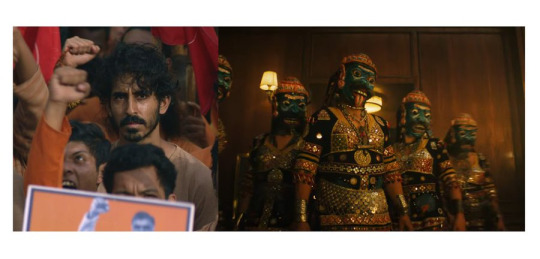
Hijra: They are the transgender, eunuch, or intersex people in India who are officially recognized as the third sex throughout most countries in the Indian subcontinent. The trans community and history in India goes back a long way as being documented and officially recognized - far back as 12th century under the Delhi Sultanate in government records, and further back in our stories in Hinduism. The word itself is a Hindi word that's been roughly translated into English as "eunuch" commonly but it's not exactly accurate.
Hijras have been considered the third sex back in our ancient stories, and by 2014 got official recognition to identify as the third gender (neither male or female) legally. Pakistan, Nepal, Bangladesh, and India have accepted: eunuch, trans, intersex people & granted them the proper identification options on passports and other government official documents.
But let's get into some of the history surrounding the Hijra community (which for the longest time has been nomadic, and a part of India's long, rich, and sometimes, sadly, troubled history of nomadic tribes/people who have suffered a lot over the ages. Hijras and intersex people are mentioned as far back as in the Kama Sutra, as well as in the early writings of Manu Smriti in the 1st century CE (Common Era), specifically said that a third sex can exist if possessing equal male and female seed.
This concept of balancing male/female energies, seed, and halves is seen in two places in South Asian mythos/culture and connected to the Hijra history.
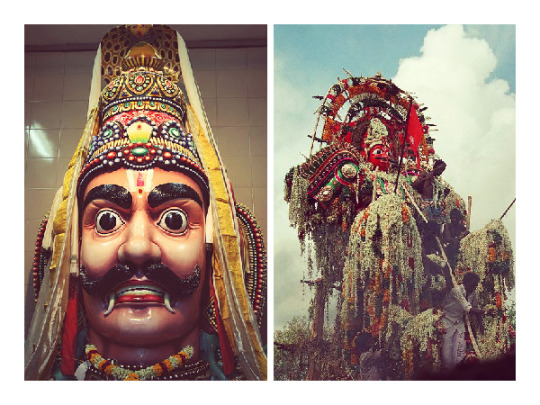
First, we have Aravan/Iravan (romanized) - who is also the patron deity of the transgender community. He is most commonly seen as a minor/village deity and is depicted in the Indian epic Mahabharata. Aravan is portrayed as having a heroic in the story and his self-sacrifice to the goddess Kali earns him a boon.

He requests to be married before his death. But because he is doomed to die so shortly after marriage, no one wants to marry him.
No one except Krishna, who adopts his female form Mohini (one of the legendary temptresses in mythology I've written about before) and marries him. It is through this union of male, and male presenting as female in the female form of Mohini that the seed of the Hijras is said to begun, and why the transgender community often worships Aravan and, another name for the community is Aravani - of/from Aravan.
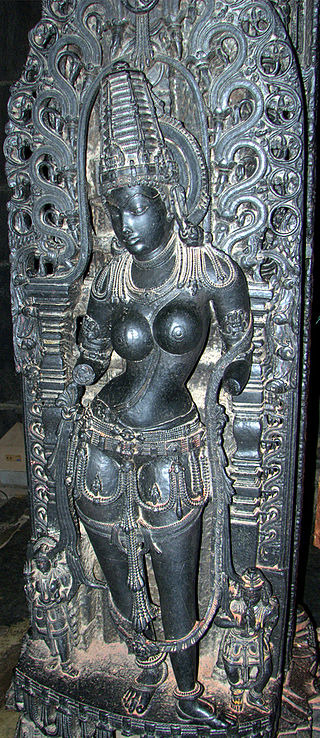
But that's not the only place where a gender non conforming divine representation can be seen. Ardhanarishvara is the half female form of lord Shiva, the destroyer god.
Shiva combines with his consort Parvarti and creates a form that represents the balancing/union between male/female energies and physically as a perfectly split down the middle half-male half-female being. This duality in nature has long been part of South Asian culture, spiritual and philosophical beliefs, and it must be noted the sexuality/gender has often been displayed as fluid in South Asian epics and the stories. It's nothing new.

Many celestial or cosmic level beings have expressed this, and defied modern western limiting beliefs on the ideas of these themes/possibilities/forms of existence.
Ardhanarishvara signifies "totality that lies beyond duality", "bi-unity of male and female in God" and "the bisexuality and therefore the non-duality" of the Supreme Being.
Back to the Hijra community.
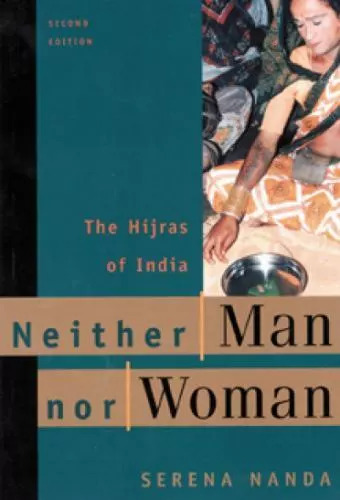
They have a complex and long history. Throughout time, and as commented on in the movie, Monkey Man, the Hijra community has faced ostracization, but also been incorporated into mainstream society there. During the time of the Dehli Sultanate and then later the Mughal Empire, Hijras actually served in the military and as military commanders in some records, they were also servants for wealthy households, manual laborers, political guardians, and it was seen as wise to put women under the protection of Hijras -- they often specifically served as the bodyguards and overseers of harems. A princess might be appointed a Hijra warrior to guard her.

But by the time of British colonialism, anti-Hijra laws began to come in place folded into laws against the many nomadic tribes of India (also shown in part in Monkey Man with Kid (portrayed by Dev Patel) and his family, who are possibly
one of those nomadic tribes that participated in early theater - sadly by caste often treated horribly and relegated to only the performing arts to make money (this is a guess based on the village play they were performing as no other details were given about his family).
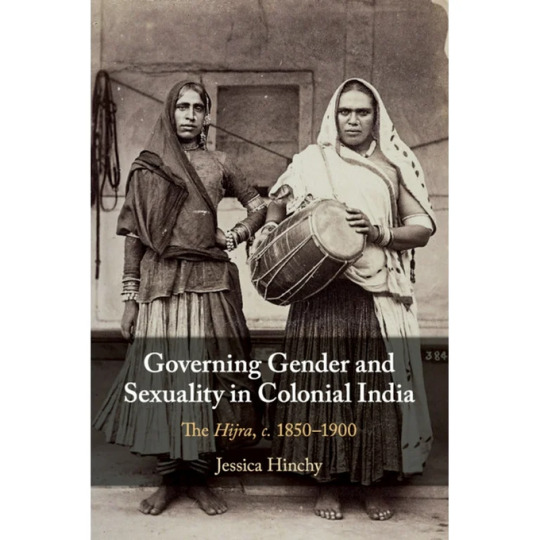
Hijras were criminalized in 1861 by the Indian Penal Code enforced by the British and were labeled specifically as "The Hijra Problem" -- leading to an anti-Hijra campaign across the subcontinent with following laws being enacted: punishing the practices of the Hijra community, and outlawing castration (something many Hijra did to themselves). Though, it should be noted many of the laws were rarely enforced by local Indian officials/officers. But, the British made a point to further the laws against them by later adding the Criminal Tribes Act in 1871, which targeted the Hijra community along with the other nomadic Indian tribes - it subjected them to registration, tracking/monitoring, stripping them of children, and their ability to sequester themselves in their nomadic lifestyle away from the British Colonial Rule.
Today, things have changed and Hijras are being seen once again in a more positive light (though not always and this is something Monkey Man balances by what's happened to the community in a few scenes, and the heroic return/scene with Dev and his warriors). All-hijra communities exist and sort of mirror the western concept of "found families" where they are safe haven/welcoming place trans folks and those identifying as intersex.
These communities also have their own secret language known as Hijra Farsi, which is loosely based on Hindi, but consists of a unique vocabulary of at least 1,000 words.
As noted above, in 2014, the trans community received more legal rights.
Specifically: In April 2014, Justice K. S. Radhakrishnan declared transgender to be the third gender in Indian law in National Legal Services Authority v. Union of India.
Hijras, Eunuchs, apart from binary gender, be treated as "third gender" for the purpose of safeguarding their rights under Part III of our Constitution and the laws made by the Parliament and the State Legislature. Transgender persons' right to decide their self-identified gender is also upheld and the Centre and State Governments are directed to grant legal recognition of their gender identity such as male, female or as third gender.
I've included some screenshots of (some, not all, and certainly not the only/definitive reads) books people can check out about SOME of the history. Not all again. This goes back ages and even our celestial beings/creatures have/do display gender non conforming ways.
There are also films that touch on Hijra history and life. But in regards to Monkey Man, which is what started this thread particularly and being asked to comment - it is a film that positively portrayed India's third sex and normalized it in its depiction. Kid the protagonist encounters a found family of Hijras at one point in the story (no spoilers for plot) and his interactions/acceptance, living with them is just normal. There's no explaining, justifying, anything to/for the audience. It simply is. And, it's a beautiful arc of the story of Kid finding himself in their care/company.
#hijra#trans representation#monkey man#dev patel#transgender#trans rights#trans rights are human rights#third sex#indian history#indian culture#colonialism#imperialism#south Asian mythos#South Asian myths#Aravan#Iravan#Mahabharata#hindu mythology#hindu gods#kali goddess#krishna#hindu mythology art#Ardhanarishvara#Shiva#Parvarti#sexuality#gender fluid#fluid sexuality#trans community#transgender rights
605 notes
·
View notes
Text
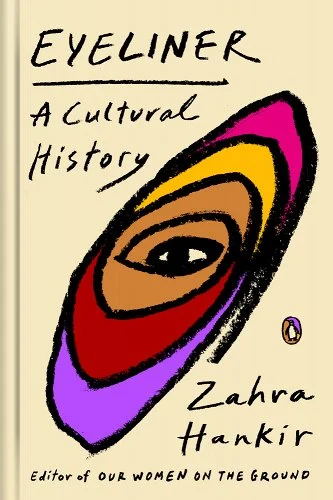
Eyeliner: A Cultural History
Zahra Hankir
From the distant past to the present, with fingers and felt-tipped pens, metallic powders and gel pots, humans have been drawn to lining their eyes. The aesthetic trademark of figures ranging from Nefertiti to Amy Winehouse, eyeliner is one of our most enduring cosmetic tools; ancient royals and Gen Z beauty influencers alike would attest to its uniquely transformative power. It is undeniably fun--yet it is also far from frivolous. Seen through Zahra Hankir's (kohl-lined) eyes, this ubiquitous but seldom-examined product becomes a portal to history, proof both of the stunning variety among cultures across time and space and of our shared humanity. Through intimate reporting and conversations--with nomads in Chad, geishas in Japan, dancers in India, drag queens in New York, and more--Eyeliner embraces the rich history and significance of its namesake, especially among communities of color. What emerges is an unexpectedly moving portrait of a tool that, in various corners of the globe, can signal religious devotion, attract potential partners, ward off evil forces, shield eyes from the sun, transform faces into fantasies, and communicate volumes without saying a word. Delightful, surprising, and utterly absorbing, Eyeliner is a fascinating tour through streets, stages, and bedrooms around the world, and a thought-provoking reclamation of a key piece of our collective history.
(Affiliate link above)
849 notes
·
View notes
Text
Leigh Bardugo: “Yeah so this country is like old timey magical Russia and Siberia and somewhat a little tiny bit central Asian, so that’s pretty cool. We’ll spend three books on this one country and culture.”
Leigh Bardugo: “And this one is… uh… the rest of Asia. Except India!”
Leigh Bardugo: “India is in this nomadic culture of people over here, or there, or over there. Also they’re Romani too.”
Leigh Bardugo: “Yeah and up here is Scandinavia. Just… all that. And Catholicism. Catholic Viking Nazis up here.”
Leigh Bardugo: “And then here’s New York/Amsterdam/London.”
Leigh Bardugo: “And here’s the frontier. It’s the biggest country but all we know about it is some part has ‘the frontier’ and there was maybe a war at some point and this is where all the black people come from.”
Leigh Bardugo: “And of course we have the Colonies. Whose colonies? Dunno. Pineapple and mango come from there, but I’m not gonna say it’s South/ Central American or Caribbean even tho it… definitely is.”
Leigh Bardugo: “And here’s IreScotland!”
#six of crows#soc#shadow and bone#No hate I’ve definitely developed worlds less lmao#This is just a joke#wesper#kanej#helnik#the grisha series#grisha trilogy#grishaverse#LB: but if I develop the world properly then how will a 16 y/o girl going thru a crisis make a detailed map of one of my countries??
234 notes
·
View notes
Text
Katara the selfcare queen
Every canon instance or mention (that i can rmr) of Katara indulging in selfcare in the middle of a war because I find it quite amusing yet fascinating.
I may or may not have made a post like this before but I wanted to expand on it.
1. Skincare routine

In 1x14, The Fortuneteller, Katara reveals she has a special seaweed lotion that she carries with her for soft skin. (Avatar Extras also made a point of saying that it smells…?) She even offers to get Aunt Wu some, as if she has extra. So my question is, who is this plug that she gets her steady supply of seaweed lotion from? 😭
Real-life: Seaweed has been used in skincare for thousands of years, first recorded in ancient Chile. Nowadays, seaweed extract is pretty common in skincare products especially from emerging brands in Nunavik and Iqaluit, Canada.
My headcanon: This is probably a recipe Katara picked up from the older women of her tribe, so she just plucks some seaweed whenever the gaang stops by a body of water. And she definitely makes it in cute glass jars and shares it with her fellow healers in the Republic City Hospital ✨selfcare queen✨
2. Spa Day
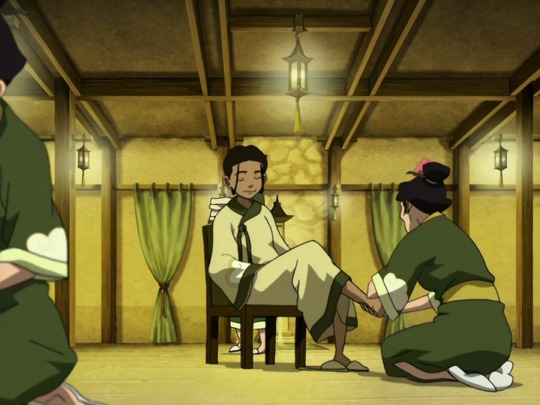
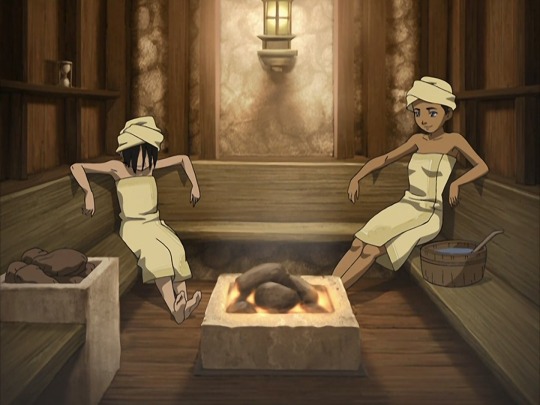

I just find this funny because when and how did she even find this spa? How long has she been going by herself? Look how comfortable she is like dhjfjcd she’s definitely a regular and they all know her.
Real-life: Saunas are pretty modern, starting up in Finland around 1112. (In canon, I think a firebender and a waterbender run a sauna in Republic City so hey.) Mudbaths on the other hand have been around for centuries and people have been doing it at any naturally occurring hot spring they can found. I don’t even have to tell you about massages so
My headcanon: Katara always knows where the spas and selfcare places are wherever they go. I definitely think she scooped up some stuff at the perfume abbey in season 1 (because she’s a kleptomaniac). I also headcanon she would have a spa setup in the back of Republic City Hospital because selfcare is healthcare too. Also, Aang gives her massages at home and he’s surprisingly good at it, but, Katara sucks at massages and Aang never lets her do it to him after that one time 💀
3. Yoga


In 3x11, Nightmares & Daydreams, Katara teaches Aang yoga to de-stress in a hot spring. My thing is, when did she learn about yoga and how often does she do it? We needed the Katara yoga mini shorts special. The kids would’ve loved it.
Real life: Yoga originating from ancient India is practised in a variety of forms in Hinduism, Jainism and Buddhism. The poses they do are the Upward Salute and the Wide Legged Forward Bend.
My headcanon: I imagine Katara must have read about this at the Air Nomad Section of the Spirit Library, given the cultural heritage. Knowing her she found a yoga scroll and swiped it (can you say klepto?). This is another selfcare thing she does with Aang because it’s his culture! They do it every Saturday until he starts complaining about his old bones 😅
4. Hair care

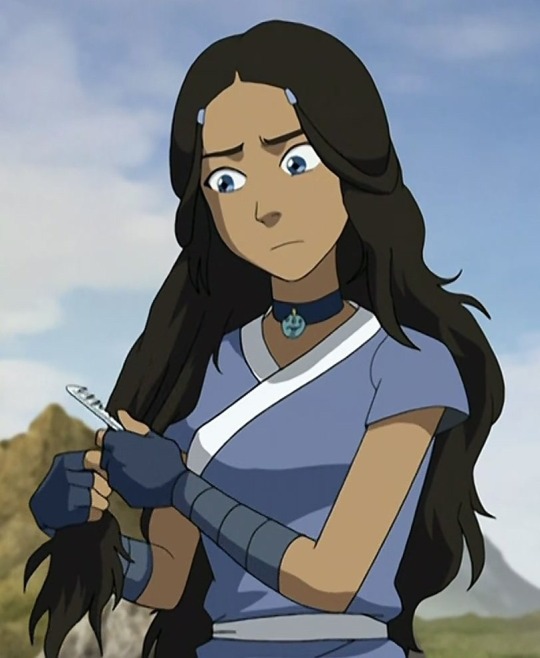


Katara also wears a special cap on her head when doing yoga which I assume is to protect her hair from the steam 🤔 I just found it very interesting since we hardly see her hair covered. Then I also realized Katara is the only character shown actually combing her hair and styling it like 4 times: from the bun-braid, to the formal earth kingdom look, to her fire nation look and finally the bun with her hair out.
Real life: I typed so many things and I finally found something similar called a chinoiserie satin skull cap? (sorry pic limit). It’s similar in design and even has a tassel like Katara’s. Focusing on her hairstyles, the signature “hair loopies” are actually based on a traditional Inuit style known as qilliqti and her earth kingdom look is based on a traditional Manchurian style called liangbatou.
My headcanon: Like Katara’s mysterious seaweed lotion recipe, she probably makes several haircare products for herself, and has a major hair routine. So, it would make sense she wears protective caps from time to time. I also think both Hama and Katara are tied to the myth of Senna, the Inuit sea goddess, through the comb Katara uses which I headcanon is the identical comb Hama had in her home (again klepto).
If there’s any more selfcare moments I left out, please feel free to share or reply with your own Katara ✨selfcare queen✨ headcanons!
#atla#katara#self care#self care queen#skincare#spa#yoga#haircare#culturalexploration#my headcanons#kataang#anti zutara
208 notes
·
View notes
Text
Werewolf Fact #75 - Cynocephali (dog-headed men)
This month's folklore fact is a long-awaited one from over on the Patreon: the cynocephali or "dog-headed men."

Some depictions of cynocephali (the one above is from the Nuremberg Chronicle, 1493) are mistaken for werewolves fairly frequently; there are several differences of note, including but not limited to the fact that they are otherwise very, very human (normal hands and feet, no tail, etc) and that their ears are not always shaped like a wolf's/pointing directly upright. They often are, however, so don't take the ear shape as a surefire thing, either. When in doubt, make sure the depiction is actually meant to be showing a werewolf before using it for, I don't know, a royalty-free image in your werewolf publication (I've seen several). The cynocephali do not shapeshift, nor are they associated with wolves. They have nothing to do with werewolves. Yes, it was just a plot to make you click this link and read about cynocephali.
Cynocephali, or singular cynocephalus, is a term derived from the original Greek word "kynokephaloi," meaning "dog-headed." They have other names as well, which mean a range of things such as "dog-faced" and "half-dog." They were mentioned in assorted accounts and tales of travelers in Africa and India, appearing in sources as old as ancient Greece, and some similar beings can be found in other cultures, such as China. Likewise, depictions of and discussions of such beings continue into the Middle Ages. This same term was later used to refer to baboons, to which no-fun modern day scholars now attribute all cynocephali legends (although we do have at least one Ottoman depiction of a cynocephalus battling a monkey).
There are many quotes across various sources and time periods about these beings, including but not limited to this one from the fifth century BC Greek historian Herodotus, Histories 4. 191. 3 (trans. Godley) [source: Theoi]
"For the eastern region of Libya, which the Nomads inhabit, is low-lying and sandy as far as the Triton river; but the land west of this, where the farmers live, is exceedingly mountainous and wooded and full of wild beasts. In that country are the huge snakes and the lions, and the elephants and bears and asps, the horned asses, the Kunokephaloi (Cynocephali) (Dog-Headed) and the Headless Men that have their eyes in their chests, as the Libyans say, and the wild men and women, besides many other creatures not fabulous."
Some stories of the cynocephali are also frightfully specific as to how they live, rear livestock, grow fruit, weave baskets, wage war, and much more, even including details of their society, clothing, how long they live, etc. It's all quite interesting. If you'd like to read more specific quotations, you can find many on one of my favorite websites, Theoi.
Sources seem to dispute one another as to whether they bark, do not bark but only howl, only shriek, or whatever other sounds they may make, and there is also a range of descriptions including elements such as if they have beards and whether hair covers their bodies as well as the dog-head. Overall, probably the majority of sources say they wear the skins of animals as opposed to having fur, but there are those that also call them hairy all over.
Please note that I will not be covering/discussing any gods from ancient Egypt in this post, because despite what some modern day scholars like to discuss, I don't consider them "cynocephali." They were wolf-headed deities, not dog-headed (or even jackal-headed), and are overall only related to cynocephali legends by proxy and by modern scholars always putting everything into blasted categories for their next thesis. There were some dog-headed deities in ancient Egypt, and Anubis, Wepwawet, Duamutef, etc, were not among them, and even then, we can't really assert that the dog-headed deities among the ancient Egyptians are actually related to other legends and records of cynocephali.
With that out of the way, let's continue...
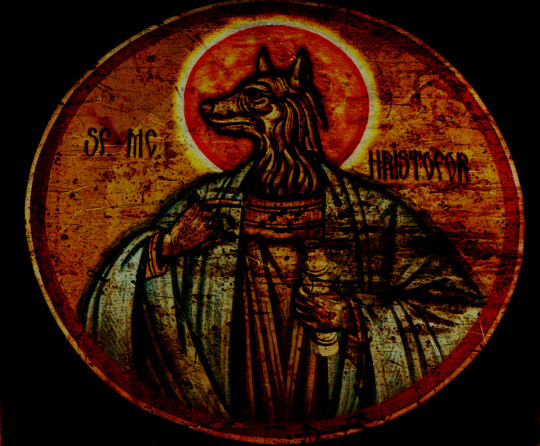
One of my personal favorite stories involving a dog-headed man is a version of the tale of Saint Christopher, though these depictions and this tale are not seen as canon by churches and has been proscribed in Eastern Orthodoxy (where such depictions were generally most common). Some of these depictions still survive, however. Some sources believe that Byzantine depictions of a dog-headed Christopher come from mistaking "Cananeus" (meaning "Canaanite") for "caninus," i.e. canine.
In the story about a dog-headed Saint Christopher, there lives Reprebrus (among other variations of his name; ultimately, they all essentially mean "reprobate"), who is captured by Romans in battle and made to serve among them. Reprebrus was said to be of "enormous size," with the head of a dog, said to be typical of his kind. He was later baptized and martyred. However, in another version (this one from Germany), Saint Christopher is depicted as a giant cynocephalus who ate human flesh and performed many atrocities. He meets the Christ child later and carries him across a river, as in tradition (the name Christopher means "bearer of Christ") and repents for his sinful behavior. He is baptized and becomes human, dedicating himself to serving Christianity and became a soldier saint.
There are far more fascinating details in the story than I relayed here in extreme simplicity, but that's a very simple view (the story is actually very specific about different regions and even the unit in which he served).
Other depictions of cynocephali exist in certain Christian traditions, with Ahrakas and Augani sometimes being depicted with dog heads in Coptic Christian tradition, in the life and legend of Saint Mercurius.
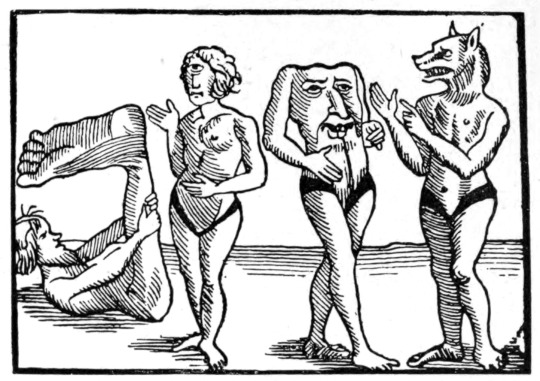
Bestiaries also got pretty wild with the creatures depicted therein, many of which were also mentioned in classical sources (such as the Herodotus quote earlier in this post). The image above is from between 1357 and 1371, in a work called The Voyage and Travels of Sir John Mandeville, or simply Mandeville's Travels, the memoirs of a man who traveled across the Middle East, India, and even as far as China. Medieval bestiaries also recorded all the same creatures shown here: a monopod or sciapod, a cyclops, a blemmy, and a cynocephalus, each different civilizations of beings said to dwell across the world (and often cited in multiple sources over considerable spans of time, which generally cite the same or similar regions for each civilization, which I've always found very interesting).
Mentions of the cynocephali span across centuries, such as in works by scribe Paul the Deacon, a Benedictine monk, and they are even mentioned in the Nowell Codex, a surviving Old English work containing Beowulf (as well as a work of the life of Saint Christopher and Wonders of the East, among others). They are also acknowledged in the works of multiple noteworthy explorers, including but not limited to Marco Polo, Christopher Columbus, Giovanni da Pian del Carpine, Ibn Battuta, and Piri Reis.
With that, I think that's a decent overview! Hope you enjoyed the post.
And stay tuned for news and updates on a major [werewolf/fantasy/adventure/horror/epic] book release later this year!
If you like my blog, be sure to follow me here and elsewhere for much more folklore and fiction, including books, especially on werewolves! You can also sign up for my free newsletter for monthly werewolf/vampire/folklore facts, a free story, book previews, and my other sundry projects and works, such as plushes.
Free Newsletter - maverickwerewolf.com (personal site + book shop + free fiction) — Patreon — Wulfgard — Werewolf Fact Masterlist — X — Vampire Fact Masterlist — Amazon Author page
#folklore#mythology#dog-headed men#dog heads#cynocephalus#cynocephali#dog man#fantasy creature#folklore fact#folklore thursday#myth#history#fantasy#werewolf#werewolves#not actually werewolves but people mix them up a lot#a werewolf has to shapeshift to be a werewolf#also these are dog-headed men not wolf-headed men#but anyway#research
63 notes
·
View notes